Your Life-Changing Low Cholesterol Diet Plan: All about Good Cholesterol Foods
Welcome to Low Cholesterol Diet Plan, your new information resource for all things related to cholesterol lowering diets.
Perhaps you’ve ended up here because a medical professional has warned you that you need to get your cholesterol intake under control – or perhaps you’re simply aware of the dangers of cholesterol, realize your current diet is putting you on a bad track, and you want to make a change to a diet for lowering cholesterol.
Whatever the case may be, you’ll find all the information you need here :-)
In this article you will first get a proper understanding of:
- What is cholesterol and what role does it play inside your body?
- What precisely does HDL and LDL cholesterol mean and how is it related to food?
- ‘Good’ fats and ‘bad’ fats!
And of course on this page you’ll also get lots of inspiration to help you put together your low cholesterol diet plan:
- A list of low cholesterol foods as well as cholesterol lowering foods (not necessarily the same kind of foods)
- A list of lifestyle tips to lower cholesterol
- Suggestions to a low cholesterol diet menu
What Is Cholesterol and What Does It Do?
Cholesterol Is Really Just a Form of Fat!
Before we can even get into low cholesterol diet plans and foods for lowering cholesterol, it’s important that you understand the basics of the role cholesterol plays in your health and wellness. Cholesterol isn’t some sort of poison or toxin – it actually has an important role in how your body functions.
So what is cholesterol?
Well, to put it short, it’s a form of fat.
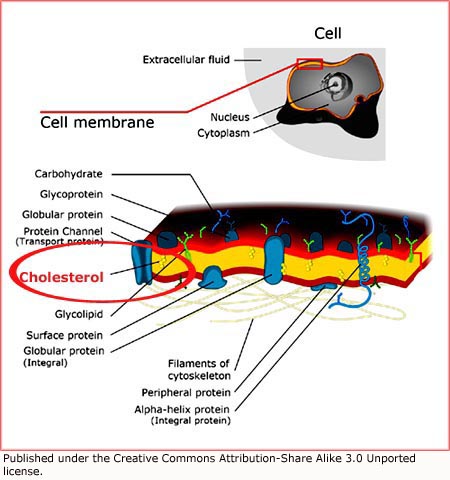 Your body uses it in the creation of cell membranes – without these membranes, you literally wouldn’t be able to exist as a human being, so cholesterol is not all bad!
Your body uses it in the creation of cell membranes – without these membranes, you literally wouldn’t be able to exist as a human being, so cholesterol is not all bad!
In addition cholesterol plays a role in producing sex hormones (testosterone, progesterone and estrogens) and metabolizing important vitamins.
The same is true of all body fat: it’s a necessary part of the way your body functions.
That’s why you can see incredibly “ripped” bodybuilders who still have 5-6% body fat levels. We need fat to survive. It’s as simple as that!
High Density Lipoprotein (HDL) & Low Density Lipoprotein (LDL): The Two Types of Cholesterol
One thing you need to be aware of before you even get started with a low cholesterol diet plan is that there are actually two different types of cholesterol.
Cholesterol in itself is not bad, you see. Like much else in life, it’s all a question of balance (a subject I will return to later in this article).
The two types are High Density Lipoprotein (HDL) and Low Density Lipoprotein (LDL). Here’s the difference:
High Density Lipoproteins (HDL) – Our Good Cholesterol Clean Up Friends
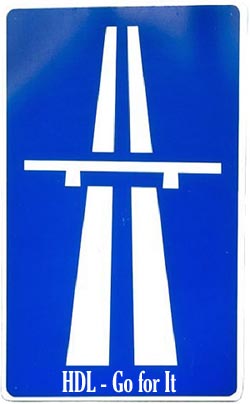 This is what is popularly referred to as “good cholesterol.”
This is what is popularly referred to as “good cholesterol.”
HDL serves the function of carrying excess fats from bodily tissues like muscles to the liver (cholesterol doesn’t dissolve in the blood and has to be metabolized by the liver).
Although there’s still a lot of speculation in the medical community about exactly what HDL does, it’s certainly not bad for you. There is plenty of evidence indicating that low HDL levels increase the risk of heart attack, and increasing HDL levels may even lower heart attack risks for those who already have high bad cholesterol levels.
Low Density Lipoproteins (LDL) – Also Our Friends, But Only When in Small Numbers
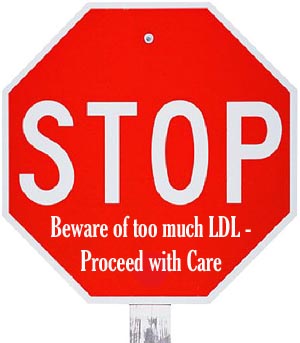 And LDL is often nicknamed “bad cholesterol” and is probably the stuff your doctor may have warned you about.
And LDL is often nicknamed “bad cholesterol” and is probably the stuff your doctor may have warned you about.
LDL does serve an important function in the body, carrying fats from the liver to cells, among other things.
However, and here is the potential problem, only a small amount of LDL is required for this basic function.
Excess LDL may lead to problems!
This is the type that builds up in arteries and can lead to the formation of blockages – this condition is known as atherosclerosis. This is an extremely serious issue which may when left untreated lead to stroke and cardiac arrest.
Navigating the HDL and LDL Food Jungle
So as you can see it’s not just about regulating your cholesterol intake altogether.
No, it’s about finding out which foods contain each type of cholesterol (or encourage cholesterol production in the body itself) and focusing on avoiding too much of the so-called bad cholesterol foods and eating more of the good cholesterol foods.
A low cholesterol diet plan should aim at lowering bad cholesterol and raising good cholesterol.
Trans Fats Are the Real Enemy, not LDL or Saturated Fats
Why These Hidden Fats Are So Dangerous
 These days many people don’t even bother to look at the nutritional information on food packaging.
These days many people don’t even bother to look at the nutritional information on food packaging.
And those who do are often looking for the wrong things. For instance, we have it drilled into us to watch out for dietary fat, especially saturated fats.
While eating a lot of saturated fat is definitely a cause of storing more body fat, there’s a difference between dietary fat that you eat and fat stored in your body. Fat stored in your body doesn’t have to come from fat itself – it can be a store of energy from carbohydrates, for example.
This obsession with saturated fat has led many people to not even notice “trans fats” on food packaging.
Usually trans fats are only in foods in very tiny quantities, and it is therefore only very natural to assume that such small quantities of anything can’t be harmful.
Sorry my friend, wrong!
Small amounts of trans fats can be equally as harmful as large amounts of saturated fats.
Trans fats have the effect of actually making the body produce more bad cholesterol from within.
So just because a food claims to be low in cholesterol, it doesn’t necessarily mean it is good for you – if it contains trans fats it could crank up bad cholesterol production from within.
Switching out Butter for Margarine – not Necessarily a Good Idea!
Traditional Margarine Is a Party Palace of Trans Fats
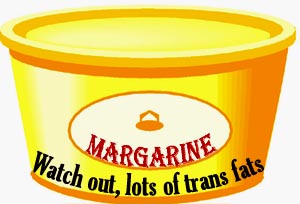 Many people attempt to cut down on saturated fat consumption by switching out butter for margarine.
Many people attempt to cut down on saturated fat consumption by switching out butter for margarine.
This can be an effective part of a low cholesterol diet plan. But the problem here is that many margarine products involve the hydrogenation process, which means margarine is high in trans fats.
So all the labels on margarine that claim it has lower fat than butter might be right but are at the same time really quite misleading.
So if you want to engage in a low cholesterol diet plan, you’re best to avoid traditional butter and margarine altogether and try to find a light alternative.
Because awareness of trans fats is spreading there are now many trans-fat-free margarine products on the market.
Some margarine products are created specifically with high cholesterol sufferers in mind and contain ingredients that block cholesterol absorption. Your doctor should be able to recommend a good spread.
When Cholesterol Becomes Dangerous
What many people don’t realize is that the majority of cholesterol in your blood was actually created inside your body.
Only around 15-20% of your cholesterol level comes from your diet. However, it’s when you eat excessive amounts of bad cholesterol that these statistics start to fall out of balance and you end up with health problems and a higher risk of heart disease and heart attacks.
High levels of bad cholesterol in the blood stream lead to a build-up of fatty deposits along artery walls. These fatty deposits are called plaques, and as they build up they narrow the artery, restricting blood flow. In the worst case scenario a plaque will block the artery entirely so that no blood can pass through.
A myocardial infarction is the medical term for what we most commonly call a “heart attack.” Heart attacks typically happen when one of these plaques ruptures and restricts blood flow (and thus oxygen supply) to the heart.
This is how bad cholesterol is directly linked to heart attacks.
How to Create Your Own Low Cholesterol Diet Plan
So by this point you’re well aware of the dangers surrounding bad cholesterol – now what can you do about it?
The answer, in large part, revolves around a low fat low cholesterol diet. You need to cut the foods that are contributing to high levels of bad cholesterol and focus on eating more foods containing good cholesterol.
The first step in creating your low cholesterol diet plan is identifying the usual suspects and eliminating them from your diet – the foods you eat regularly which are high in saturated fat and bad cholesterol.
You might find this hard to do at first though, which is why it you may find it easier to start from the other side: create a complete low fat low cholesterol diet plan that covers every day of the week.
Once you know what you’ll be replacing those high cholesterol foods with, it’s easier to give them up. Often the reason people struggle to get onto a low cholesterol diet plan is because they assume they’ll be losing something in terms of taste satisfaction.
That’s simply not the case – here are a handful of ways you can still get the same, if not more enjoyment from your meals while also making sure you don’t elevate your bad cholesterol levels (and actually bring them lower).
The List of Low Cholesterol Foods
1) Go for Lovely Lean Meats
 Many people with cholesterol problems tend to eat a lot of fatty red meats like steak and beef (if you’re a hamburger lover, this is probably you).
Many people with cholesterol problems tend to eat a lot of fatty red meats like steak and beef (if you’re a hamburger lover, this is probably you).
There’s no reason you can’t enjoy meat and maintain low cholesterol levels – you just have to focus on lean meats in your low cholesterol diet plan.
Chicken and turkey are great – they’re delicious and filling, and they go well in sandwiches, salads and a variety of dinner meals.
You should also look at switching from a high intake of red meat to eating more fish – we’ll discuss the power of fish in reducing cholesterol in the Cholesterol Lowering Foods section further down.
2) Focus on Fabulous Fruits and Vegetables
 Eating a wide range of fruits and vegetables will help ensure your body gets all the vitamins and nutrients it needs without having to take in large amounts of bad cholesterol.
Eating a wide range of fruits and vegetables will help ensure your body gets all the vitamins and nutrients it needs without having to take in large amounts of bad cholesterol.
People who like to eat high cholesterol foods often justify it to themselves by focusing on the good aspects of the food – “It’s high in protein,” for example. But you can get all the nutrients you need from other foods without having to eat high cholesterol foods.
Fruits and vegetables also have the advantage of being relatively low in calories for how “filling” they are, so you can eat a lot of them without storing energy as body fat. Apples and pears also contain soluble fiber, which reduces bad cholesterol levels and are therefore great in your low cholesterol diet plan.
3) Search for the Low Fat Versions of Dairy Products
Many foods, especially dairy product like milk and cheese, have low fat equivalents. The same goes for yoghurt and many other foods.
You might initially complain that low fat foods just don’t taste as good, but the reality is if you stick with it for a few weeks your taste buds will adapt.
If you keep eating low fat foods for a few months and then you try the old full-fat equivalent, you’ll be amazed at the difference in the way you perceive the taste.
4) Choose Your Cooking Oil with Care
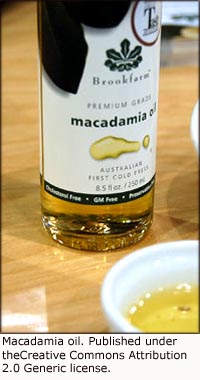 Some of the people who develop cholesterol problems are used to eating substantial amounts of fried foods.
Some of the people who develop cholesterol problems are used to eating substantial amounts of fried foods.
Think about how you can change your cooking habits to use methods which don’t rely on high cholesterol oils, like boiling.
When you do fry something, use oils that are high in monounsaturated or polyunsaturated fats rather than saturated fats.
Good cooking oils to include in your low cholesterol diet plan are options like olive oil and macadamia oil.
Low Cholesterol Diet Plan: Cholesterol Lowering Foods
So far we’ve looked at a low cholesterol diet plan that won’t raise your cholesterol levels, but what if you want to actively lower your current levels to reduce your existing risk of heart problems?
That too can be achieved by the careful selection of good foods some of which are also known as cholesterol lowering foods
By the way, don’t be scared off course by the common myth that any diet requires you to eat less. That’s simply not the case. In fact, once you start on a diet using clean and healthy food sources, you’ll actually be able to eat more because many of these foods are less calorie-dense that what you’re used to eating.
Note – none of these foods has been conclusively proven to be as effective as medication for reducing cholesterol, but there’s enough evidence to indicate they do have a positive effect.
In any case, they won’t raise your cholesterol and thus they’re worth including in a low cholesterol diet plan.
Below you will find a list of foods that in many cases are also cholesterol lowering foods that are healthy choices to include in your low cholesterol diet plan.
1) Fish and Other Omega 3 Rich Foods
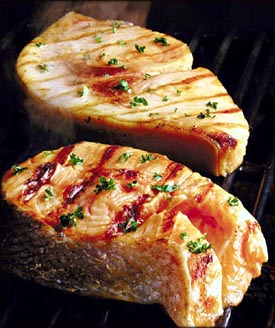 Many types of fish are excellent sources of omega 3, a nutrient which large numbers of people are lacking in modern diets.
Many types of fish are excellent sources of omega 3, a nutrient which large numbers of people are lacking in modern diets.
Omega 3 fatty acids reduce your overall risk of blood clots and heart attacks.
If you’ve already had a heart attack you should definitely be looking at adding more fish and/or fish oil supplements to your diet (although of course you should discuss this with your doctor before you make any changes – this goes for all the advice on this page, since you may have different individual needs).
In terms of actual fish as opposed to fish oil supplements, salmon is an excellent source of omega 3 as are some types of tuna.
As always, take the method of preparing the fish into account. If you fry your salmon in oils high in saturated fats you’ll simply end up cancelling out many of the benefits. Consider using fat free cooking methods, or use oils with monounsaturated or polyunsaturated fats.
2) Oatmeal and High-Fiber Foods in General
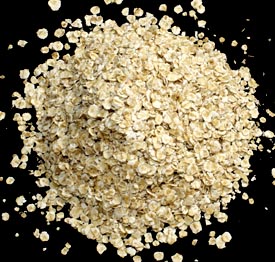 As I already mentioned, soluble fiber reduces bad cholesterol – and foods like oatmeal are packed with soluble fiber, making them important as part of a low cholesterol diet plan.
As I already mentioned, soluble fiber reduces bad cholesterol – and foods like oatmeal are packed with soluble fiber, making them important as part of a low cholesterol diet plan.
Oatmeal and high fiber cereals, as well as many fruits and vegetables which are high in fiber, are ideal as a core part of your diet plan to lower cholesterol levels.
3) Nuts, in Particular Walnuts
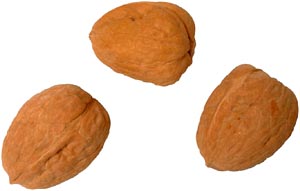 When it comes to nuts you want to be eating them in a raw, natural form – nuts that have been glazed, roasted, salted or altered some other way are not nearly as good.
When it comes to nuts you want to be eating them in a raw, natural form – nuts that have been glazed, roasted, salted or altered some other way are not nearly as good.
The reason nuts are beneficial is because they contain polyunsaturated fats.
Also, don’t view these as being a free pass to scoff down high bags of peanuts :-) – nuts are energy-dense, which means each one contains a large number of calories.
If you eat too many you may end up with an excessive calorie intake which leads to gaining body fat.
Lifestyle Tips to Include in Your Low Cholesterol Diet Plan
1) Stub Out the Cigarette – Break the Habit of Smoking!
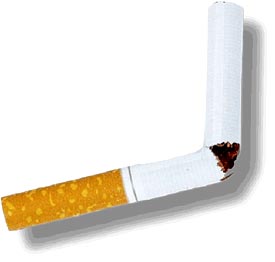 One thing you can do to have an immediate impact on your heart attack risk is to quite smoking.
One thing you can do to have an immediate impact on your heart attack risk is to quite smoking.
Smoking raises your levels of bad cholesterol while simultaneously lowering your good cholesterol – in other words, it’s a two-pronged attack on your heart health.
Now, as any smoker knows, quitting is easier said than done. Some people find it easy to give up when a doctor tells them it’s a matter of life and death – for others, even that isn’t enough to break the cycle of addiction.
If you’re struggling to quit, I’d suggest looking into quitting methods like Allen Carr’s Easyway which address the psychological reasons you smoke in the first place, or look at using nicotine patches to wean yourself off.
2) A Glass of Red Wine Is Considered Ok
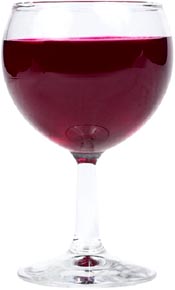 Many people wonder where alcohol fits into a low cholesterol diet plan. If you’ve already given up smoking, you might be stressing out over the prospect of having to give up drinking as well.
Many people wonder where alcohol fits into a low cholesterol diet plan. If you’ve already given up smoking, you might be stressing out over the prospect of having to give up drinking as well.
There’s still some speculation in the medical community about this, but many studies have showed a correlation between moderate intake of alcohol and a lower risk of heart disease and heart attacks.
On the flipside these studies tend to show excessive alcohol consumption correlates to a greater risk.
But the important word here is “correlation” – there’s a relationship between alcohol consumption and heart disease risk, but that doesn’t necessarily mean alcohol consumption is a direct cause. It may simply be that moderate drinkers also tend to eat fewer high-cholesterol foods.
So the answer is – if you want to drink alcohol, doing so in moderation, e.g. with a glass of red wine, probably won’t raise your bad cholesterol levels.
3) Physical Activity Will Raise Your Good Cholesterol Levels
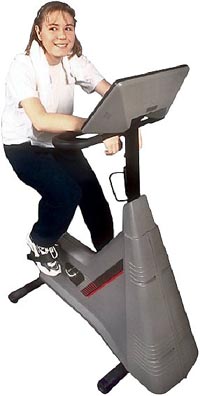 While it’s still unclear whether you can directly reduce bad cholesterol through exercise, you can definitely increase good cholesterol as a direct result of exercise – and that amounts to the same thing.
While it’s still unclear whether you can directly reduce bad cholesterol through exercise, you can definitely increase good cholesterol as a direct result of exercise – and that amounts to the same thing.
Ultimately, it means a lowered risk of heart problems, and that’s no bad thing!
So it’s important not to overlook the role of physical activity as a complement to a low cholesterol diet plan.
Even if you put an excellent low cholesterol diet plan in place, without a good aerobic exercise regime to go with it you probably won’t get optimal results. It’s a little like trying to swim the length of an Olympic pool using only one arm and one leg :-)
4) So Much to Take in – Well, Making a Commitment to Learning About Nutrition Is a Good Start
I’ll be honest with you here: changing to a low cholesterol diet plan is not as easy as many people would like to have you believe.
That’s not just because it’s hard to give up old unhealthy foods you’re used to. It’s because good nutrition requires an ongoing process of learning.
At the beginning, the learning curve can seem daunting – there’s so much to take on board. Try not to be overwhelmed – just take in each piece of information at a time and implement what you learn in small chunks.
You need to make a personal commitment to yourself right now to continue expanding your own nutritional education in the future so you can keep developing your low cholesterol diet plan.
This is not only for the sake of lowering cholesterol, but to ensure your body is in prime physical condition so you’re not at risk of a wide variety of health problems and above and beyond heart disease itself.
Luscious Low Cholesterol Diet Menu Suggestions
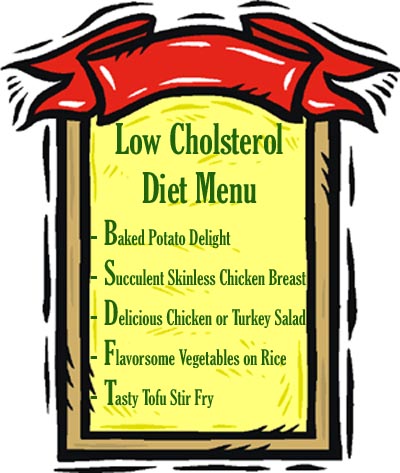 Now you know some good foods to include in a low cholesterol diet plan, but there’s a difference between knowing a few foods and being able to combine those foods into nutritious and delicious meals.
Now you know some good foods to include in a low cholesterol diet plan, but there’s a difference between knowing a few foods and being able to combine those foods into nutritious and delicious meals.
So here are a few meal suggestions to get you started. You really only need half a dozen meal ideas to get you going which you can chop and change between – then you can experiment as you become more educated on what foods hurt and help you.
1) Baked Potato Delight
This is a simple meal to prepare so it’s easy to make it a staple. Simply take a large potato (or a few if you want a big meal) and cut a cross-split into the top.
You can stuff the inside with boiled vegetables and top it off with a low fat sauce after it’s cooked to add some flavor.
2) Steamed Vegetables with Succulent Skinless Chicken Breast
Simple enough to make, this meal gives you a good helping of protein while still being low in cholesterol and saturated fat.
Vegetables can be anything of your choice – carrots, corn, broccoli, capsicum, whatever you prefer.
You can roast a whole chicken or simply dice up a breast and fry it in a healthy oil such as macadamia nut oil which is high in monounsaturated fat.
3) Delicious Chicken or Turkey Salad
Ideal if you have leftovers from the roast chicken meal above (which can also be done with turkey).
Save whatever meat is left over and use it for a salad consisting of fresh lettuce, cucumber, tomato, boiled egg (you can use just the whites – all the cholesterol is contained in the yolk, whereas the whites are high in protein), and even some nuts such as cashews or walnuts.
Use pepper and olive oil to add some extra flavor.
4) Flavorsome Vegetables on Rice
Another simple meal that can be a lot more exciting than it sounds.
Experiment with combining different vegetables – if you’ve been averse to veges after a lifelong diet of cheeseburgers and steaks, you’ll be amazed at how many different tastes are available to you in the vegetable world.
Vegetables can be boiled, fried in a healthy oil or grilled barbeque style.
You can add flavor with garlic and low fat mustard.
5) Tasty Tofu Stir Fry
This can be done with tofu, green onions, garlic, red cabbage and red pepper.
You can also add beans to the mix if that appeals to your tastes.
It may sound a little bland at first but with the right low fat sauce your can turn this into a very interesting dish.
6) Pasta with Low Fat Cheese
Of course, you don’t have to pile up your plate with vegetables at every meal. Whole grain pasta is high in fiber and can form the perfect basis for many meals.
Add some low fat cheese into the equation and you can create some incredibly tasty dishes without the big cholesterol binge.
Yes, You Can Snack!
Apart from these meal ideas and other you find or come up with on your own, remember that snacking is not excluded from your low cholesterol diet plan.
Keep plenty of healthy snacks on hand like nuts and fruit.
Eat healthy foods frequently throughout the day – if you allow yourself to get too hungry your body will start craving calorie-dense foods and that often leads to binging on foods that are bad for your cholesterol levels.
What Research Says about Niacin and Cholesterol
There’s an interesting link between niacin and cholesterol which can help you reduce your levels of bad cholesterol.
As with many other HDL raising foods and nutrients, there’s still controversy over the effects of niacin on cholesterol levels so be sure to consult your doctor before you try supplementing your diet, especially if you’re already on cholesterol medication.
In fact, one study found that when niacin supplements were given to patients who already had healthy cholesterol levels it led to an increase in stroke risk.
Niacin is a B vitamin (vitamin B3) which helps unclog the build up of bad cholesterol while stimulating the production of more good cholesterol, HDL.
No doubt you’ve heard of niacin before but you probably aren’t too sure what it actually does. Read on to find out more.
The Role of Niacin in Your Body
Niacin has a few functions in the body. Most importantly it plays a role in the functioning of the nervous system. It also has a role in making sure your digestive system works as it should.
Basically, in terms of its effects on cholesterol, it prohibits the secretion of bad cholesterol by the liver.
Niacin also stimulates and increase in the secretion of good cholesterol from the liver. Again, this is the case in people who have high bad cholesterol levels – if your bad cholesterol is already being controlled through diet and medication, niacin supplements may have adverse effects.
Most people get their niacin intake from meat and dairy, so if you’ve started restricting these food sources as part of a low cholesterol diet plan you may not be getting enough niacin right now.
You can increase your niacin intake through your diet or supplements. Generally it’s better to try to get all your important nutrients through whole foods, but sometimes this isn’t practical.
Last Note on Fats: Go for Safe Unsaturated Fat rather Than the Ambivalent Saturated Fat
I’ve already mentioned you should try to steer clear of saturated fats and replace them with monounsaturated or polyunsaturated fats where possible.
But what’s the difference, and why are some fats good for you while others are bad?
At the most basic level, the chemical structure of saturated fats is different from that of unsaturated fats. This chemical structure is the difference that means saturated fats may lead to clogged arteries while unsaturated fats do not.
To give you an idea of sources of these different fat types, saturated fats usually come from meat, poultry, eggs, and dairy.
Unsaturated fats are found in nuts, olive oil, avocadoes and so on.
Both Monounsaturated and Polyunsaturated Fats are Good Guys
There’s a further difference between the two types of unsaturated fats: monounsaturated and polyunsaturated.
Again, the difference is in the chemical structure of the molecules, but in these cases both types have similarly positive effects on your cholesterol levels.
Polyunsaturated fats are found on foods like fish whereas monounsaturated fats are in foods like nuts and olive oil.
Again, remember to watch out for “hidden” trans fats which are technically unsaturated fats and may be listed as such on food packaging.
Goal Setting and Planning as Part of a Low Cholesterol Diet Plan
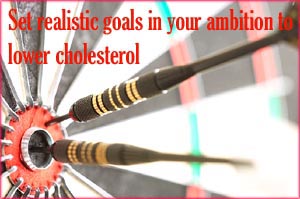 We’ve talked a lot about physical processes in your body and active steps you can actually take to lower your bad cholesterol, but there’s a more abstract side of this whole process you should although think about.
We’ve talked a lot about physical processes in your body and active steps you can actually take to lower your bad cholesterol, but there’s a more abstract side of this whole process you should although think about.
It’s a good idea to set goal and time frames for reducing your cholesterol levels.
You can do this with your doctor when you have your cholesterol levels tested – discuss what a realistic reduction target could be based on where you are now.
This allows you to keep track of whether your low cholesterol diet plan is working as well as you’d like it to.
If you set a goal and you find on your next cholesterol level test that you haven’t hit your mark, you can then make further changes to your low cholesterol diet plan and physical exercise regime.
As the famous writer and management consultant Peter Drucker put it, “What gets measured, gets managed.” :-)